Exorbitant land costs are the primary driver of Australia’s high home prices.
According to the Australian Bureau of Statistics (ABS), residential land values, which underpin the housing market, increased by 8.8% between 2023 and 2024, reaching $7.7 trillion.
Residential land values increased from 1.1 to 2.9 times Australia’s GDP over 35 years, ending in 2023-24.
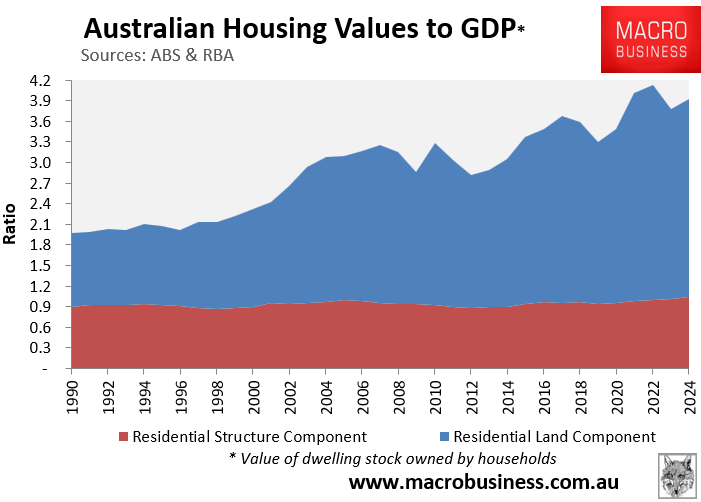
In comparison, aggregate structural values only rose from 0.88 times GDP in 1988-89 to 1.04 times GDP in 2023-24.
A recent analysis from Cameron Kusher of Oz Property Insights showed that Australian housing values have grown at an accelerated rate relative to the GDP since the late 1990s.
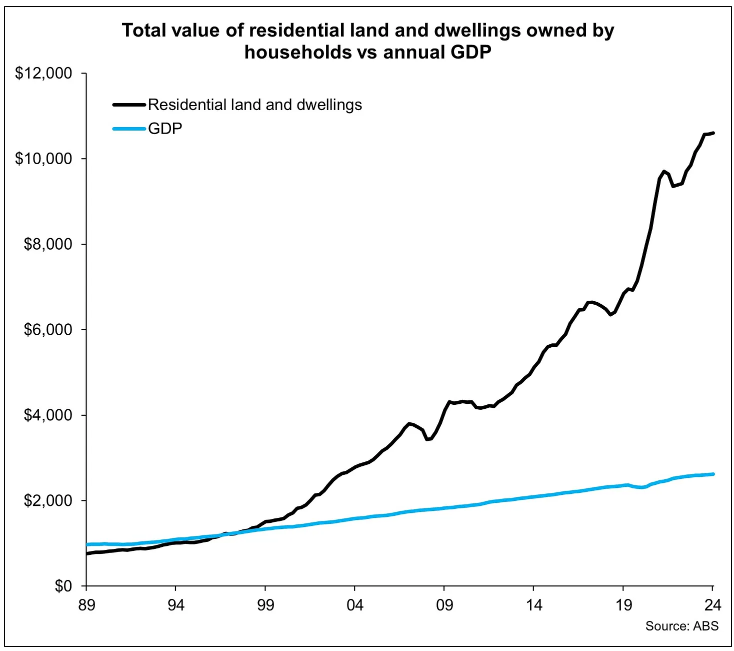
According to Kusher, residential land accounts for 70.5% of Australia’s total housing value, while houses account for 29.5%.
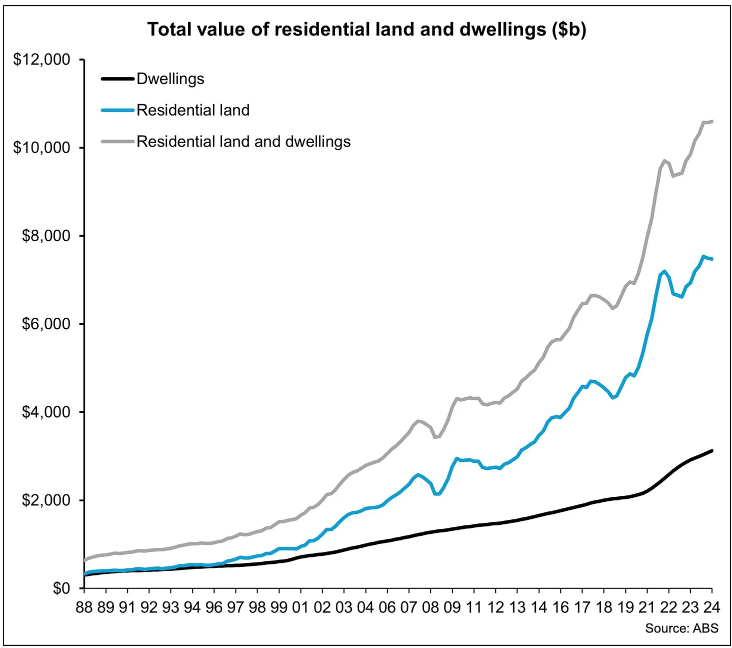
“Dwellings depreciate in value while land typically appreciate”, Kusher wrote.
“If you want to make housing cheaper or at the very least increase in value at a slower pace the key is to reduce the inflation in the value of the land”.
“With land cost escalation being the key driver of increasing property values, policymakers that are serious about making housing costs cheaper and more sustainable should be doing everything in their power to reducing the cost of residential land and making that land more abundant”, Kusher argued.
The hyperinflation of land costs is also visible in the new home market and represents a key barrier to greater housing construction.
As illustrated below by CoreLogic (now Cotality), median lot prices experienced aggressive price appreciation across all capital city markets over the decade to Q3 2024.

Meanwhile, UDIA data shows that median lot sizes across Australia have shrunk:
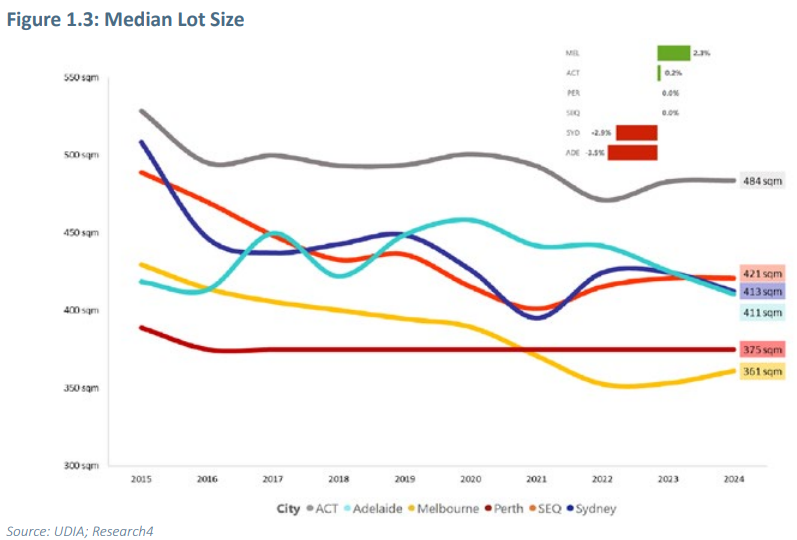
As a result, the median price per square metre has risen by more than the rise in median lot price:
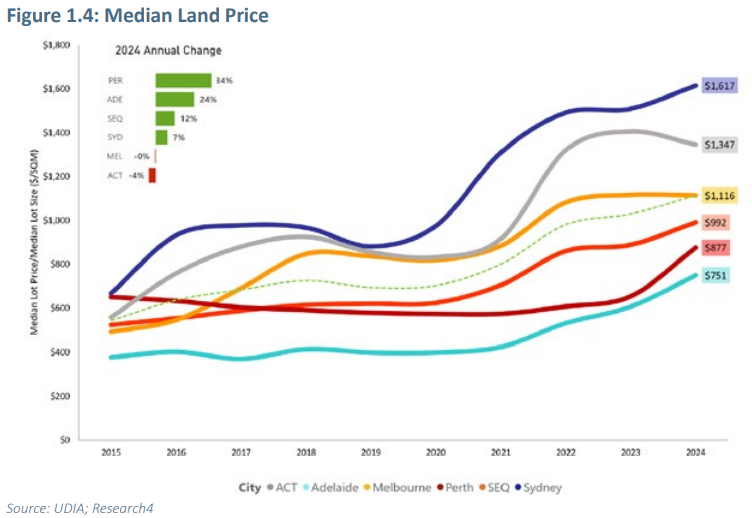
On Thursday, the Q1 2025 HIA-Cotality Residential Land Report was released, which revealed that Australia’s median residential land price reached a new high of $372,620 in the first quarter of the year, lifting prices 39.2% above the same time in 2019.
Only 8,250 residential lots were sold nationally in Q1 2025, the weakest quarter of sales for Australia in 25 years.
“From already weak levels, this deterioration in sales volumes, coinciding with record high lot prices, points to a worsening shortage of shovel ready land across the country”, HIA Senior Economist Tom Devitt said.
“Market confidence has been strengthening on the back of strong population growth, tight labour markets and recovering household incomes. Now with two interest rate cuts in the back pocket, and the expectation of more to come, this should bring even more people back to the market”.
“Without a healthy pipeline of shovel ready land across Australia’s capitals and regions—with all the associated infrastructure—this return of demand for new housing will be diverted into the established housing market, driving up prices and worsening the affordability crisis”, he said.
Buyers of new housing lots are paying higher prices and getting less in return.
Rising land costs in Australia represent a substantial barrier to building new homes for the country’s rapidly growing population.
The hyperinflation of land costs has effectively shifted the aggregate supply curve to the left, limiting the ability to build dwellings at all price levels.
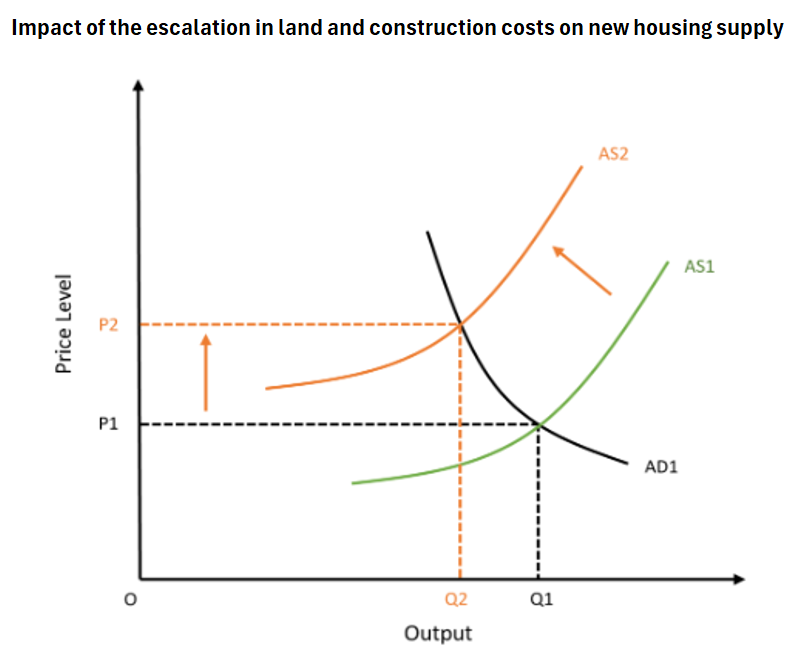
The federal government should have responded by reducing demand via lower immigration. Instead, it has chosen to ramp immigration once more via international students.
As a result, Australia’s structural shortage of housing will worsen.

